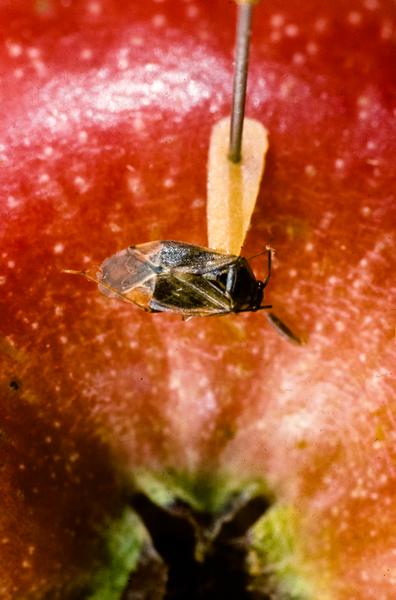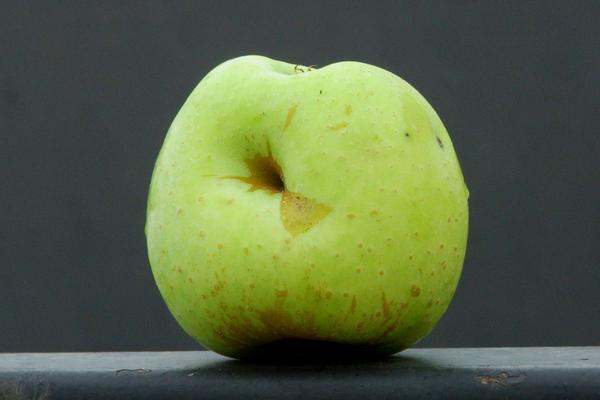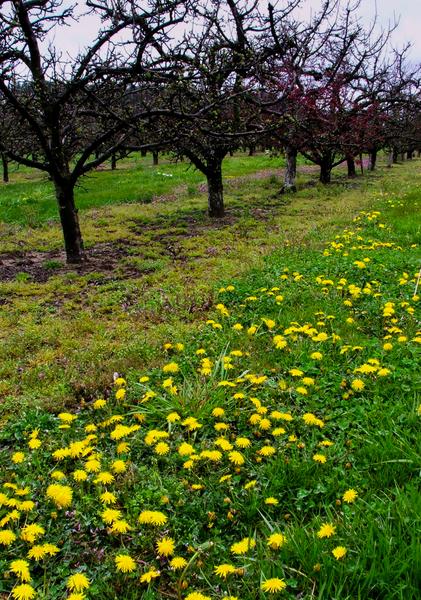Background and Description
The tarnished plant bug (Lygus lineolaris; TPB) is native to the eastern US but has spread throughout much of North America. In North Carolina, they are sporadic but sometimes serious fruit pests. They have numerous hosts and are particularly attracted to weedy orchards during bloom.
Adult TPB are brass-brown and marked with black, white, and yellow, though exact colors and markings are variable. They are about 1/4 inch (6.5mm) long, broad, flattened, and oval. Nymphs and eggs are seldom seen in orchards.
Life history
Adult TPB overwinter under debris and among the leaves of certain plants. As spring weather warms they become active, and around the bloom period they are most abundant. Adults feed on developing fruit and fruit buds. There are several generations per season, but TPB does not usually reproduce on the apple trees themselves.
Damage
When feeding, TPB inject a highly injurious salivary toxin that interferes with fruit growth. Damage varies from single small dimples to the severe "catfacing" associated with multiple injuries. Most commonly, fruit have conical-shaped sunken areas with corky tissue at the bottom.
Monitoring and Control
Since TPB is attracted to early blooming weeds on the orchard floor, it is important to eliminate these weeds before apple bud break. Controlling TPB with chemicals can be difficult since feeding damage often occurs during bloom when pesticides cannot be applied without causing bee kills or poor fruit set. However, if TPB is problematic, insecticides should be sprayed around pre-pink and again at petal fall.
Adult TPB activity can be monitored with sticky-coated 6x8 inch (15x20cm) boards painted with non-UV-reflecting white paint. From silver tip to petal fall, place at least three traps per block about 11/2 feet (45 cm) above the ground cover. An insecticide may be needed at pink if more than 3 TPB are caught by tight cluster or an average of 4.5 by pink.
See the "Pest and Orchard Management Program" section of the Integrated Orchard Management Guide for Commercial Apples in the Southeast for the most current control guidelines.
Publication date: Feb. 23, 2015
N.C. Cooperative Extension prohibits discrimination and harassment regardless of age, color, disability, family and marital status, gender identity, national origin, political beliefs, race, religion, sex (including pregnancy), sexual orientation and veteran status.






